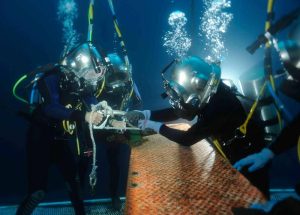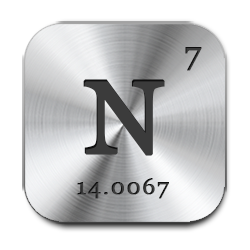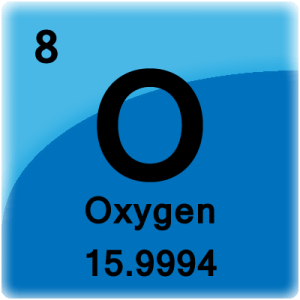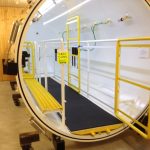 The first documented case of Decompression Sickness (also known as “The Bends”) can be traced back to 1841 when workers surfaced from their pressurized workspace, the caisson, without proper step by step equalization. The workers surfaced too quickly, and as a result suffered numerous health effects as well as death. Decompression sickness can be life threatening, so great measures must be taken to ensure that safety comes first. Below, we have listed the main components that can cause decompression sickness while diving.
The first documented case of Decompression Sickness (also known as “The Bends”) can be traced back to 1841 when workers surfaced from their pressurized workspace, the caisson, without proper step by step equalization. The workers surfaced too quickly, and as a result suffered numerous health effects as well as death. Decompression sickness can be life threatening, so great measures must be taken to ensure that safety comes first. Below, we have listed the main components that can cause decompression sickness while diving.
- Dive Time : The longer a diver is at pressure, the greater the risk of decompression sickness
- Depth : The deeper a diver travels down, the more likely they are to experience decompression sickness if not properly regulated on the way up
- Exercise at depth : hard exercise at depth can increase the chances of getting decompression sickness
- Cold water : Cold water affects the circulation of the blood and can have an impact on the prevalence of decompression sickness
- Surfacing method : The acute cause of decompression sickness is surfacing from depth too fast
 With increasing ambient pressure, the nitrogen contained in the air breathed dissolves in the blood. In order to keep the nitrogen dissolved when resurfacing, when the ambient pressure decreases, it is vital not to ascend too quickly. This is why it is very important to achieve a controlled ascent of no more than 10 meters per minute. If the pressure decreases too quickly, nitrogen bubbles form in blood and body tissue as not enough can be breathed out. The bubbles in the blood are similar to champagne bubbles that form after you open the bottle. Both of these cases are called a “pressure drop”. Ultimately, the buildup of nitrogen in the blood is the cause of decompression sickness.
With increasing ambient pressure, the nitrogen contained in the air breathed dissolves in the blood. In order to keep the nitrogen dissolved when resurfacing, when the ambient pressure decreases, it is vital not to ascend too quickly. This is why it is very important to achieve a controlled ascent of no more than 10 meters per minute. If the pressure decreases too quickly, nitrogen bubbles form in blood and body tissue as not enough can be breathed out. The bubbles in the blood are similar to champagne bubbles that form after you open the bottle. Both of these cases are called a “pressure drop”. Ultimately, the buildup of nitrogen in the blood is the cause of decompression sickness.
There are two main types of Decompression Sickness. We will cover them below as well as the symptoms that come along with them.
Type 1 Decompression Sickness (acutely treatable)
- Itchy or Burning Skin, the first sign of decompression sickness
- Rashes
- Lymphatic swelling
- Stomach Pains
- Pain in a joint or joints (these are called niggles and should begin to resolve within 10 minutes of onset)
Type 2 Decompression Sickness (sometimes fatal)
- Lower back pain within a few minutes to several hours after the dive
- Paralysis
- Loss of sphincter control
- Headaches, dizziness, tunnel vision
- Confusion and disorientation
- Coughing and severe respiratory distress
- Nausea, vomiting, and vertigo.
- Partial Deafness
Treatment of Decompression Sickness using Hyperbarics
 The moment symptoms of decompression sickness are identified, the patient should be immediately treated with 100% pure oxygen until hyperbaric oxygen therapy can be provided. In mild cases, symptoms will begin to subside and the patient will soon reach a full recovery. Any neurological or pulmonary symptoms must be treated with hyperbaric oxygen therapy if seen within 10 to 14 days of the initial onset of decompression sickness. This hyperbaric treatment is often called the recompression process. A multiplace hyperbaric chamber is the preferred venue for the administration of treatment, as medical personnel can be readily available to tend to patients.
The moment symptoms of decompression sickness are identified, the patient should be immediately treated with 100% pure oxygen until hyperbaric oxygen therapy can be provided. In mild cases, symptoms will begin to subside and the patient will soon reach a full recovery. Any neurological or pulmonary symptoms must be treated with hyperbaric oxygen therapy if seen within 10 to 14 days of the initial onset of decompression sickness. This hyperbaric treatment is often called the recompression process. A multiplace hyperbaric chamber is the preferred venue for the administration of treatment, as medical personnel can be readily available to tend to patients.
Commercial Diving Industry and Hyperbaric Systems
The commercial diving industry makes use of hyperbaric systems to help administer aid to workers who are suffering from decompression sickness. As stated above, the typical path is to obtain a multiplace hyperbaric chamber which can be transported from site to site in order to help workers in need. As soon as a worker begins to feel symptoms of decompression sickness, he or she can immediately be treated, not only with 100% pure oxygen, but also with pressure from the hyperbaric chamber. This has been proven to be the most effective way of treating decompression sickness, and is best done as soon as possible from the moment symptoms occur. It is common in the commercial diving industry to have a multiplace hyperbaric chamber on site for the purpose of treating workers who have been injured on the job.
What OEM’S sell Recompression Chambers?
Here at The Hyperbaric Store, we specialize in helping you to acquire the necessary equipment to help your commercial diving projects administer hyperbaric oxygen therapy to divers suffering from decompression sickness. Typically, multiplace hyperbaric chambers are built and placed into “fly away” conex shipping containers so that they can be transported from dive site to dive site. Depending on it’s size, the cost of a multiplace hyperbaric chamber placed in a conex shipping container ranges from $300k to $1mm. We work with companies that can help you get set up with the proper equipment for your specific needs, at the best price possible. If you have any questions about decompression sickness and the use of hyperbarics, call one of our HBOT certified experts today and we will be glad to help.




